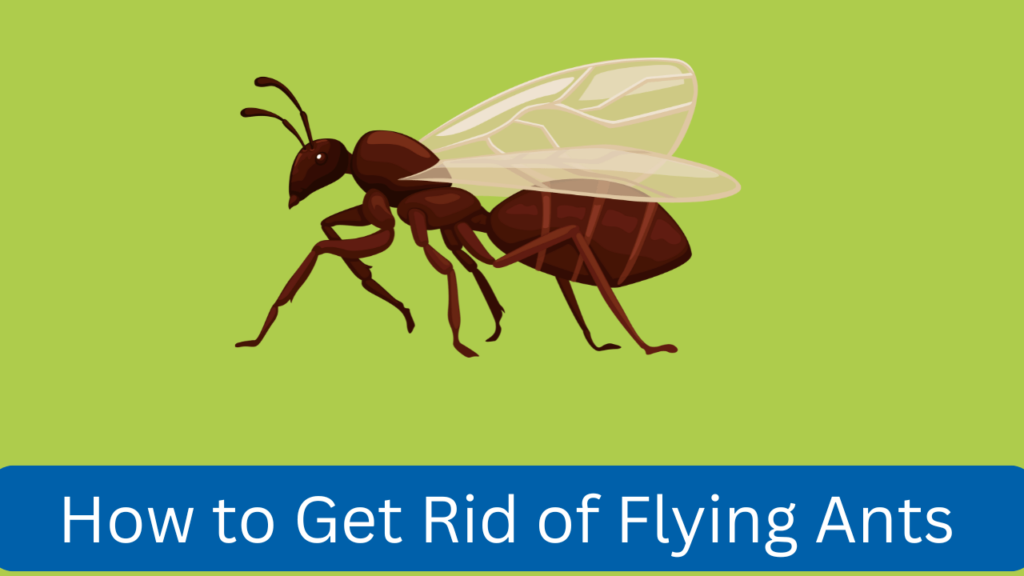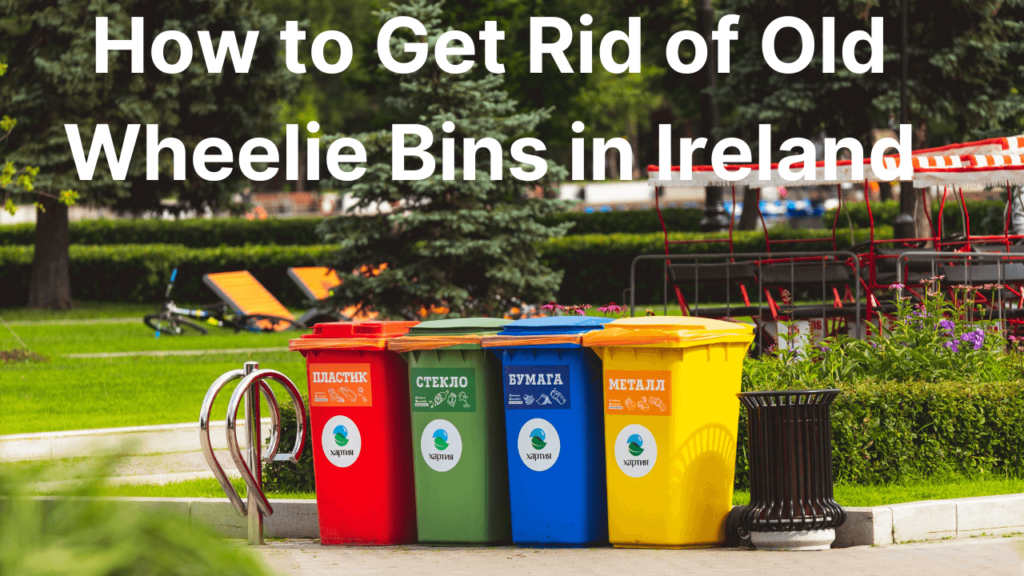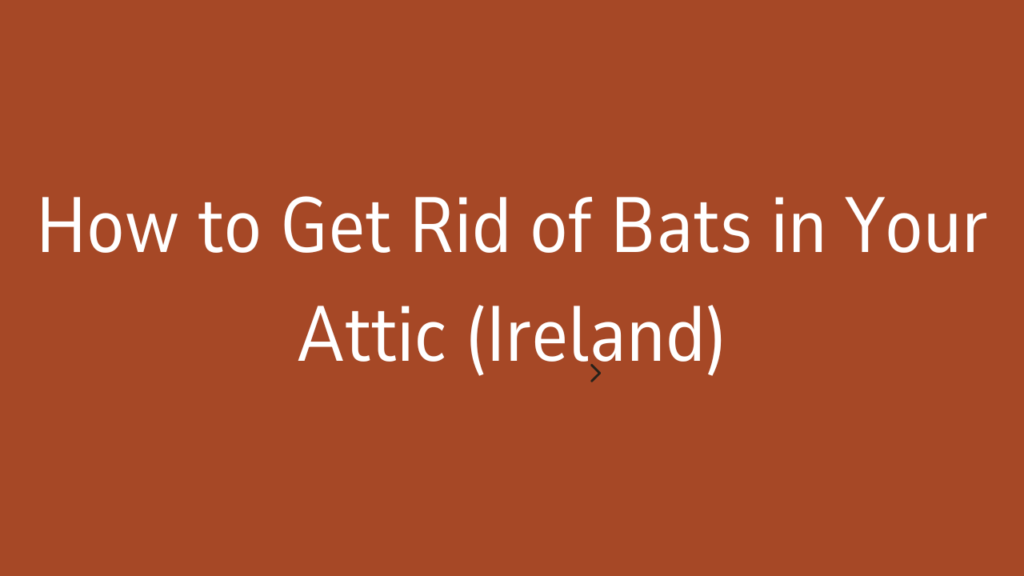Flying ants can be a nuisance, especially during summer when swarms suddenly appear in and around homes. These winged ants are not a different species but are typically the reproductive members of an ant colony. If you’re dealing with flying ants in Ireland, this guide will help you understand why they appear and how to get rid of them effectively.
What Are Flying Ants?
Flying ants, also called alates, are ants in their reproductive phase. They emerge from their colonies during certain times of the year to mate and start new colonies. Common species of flying ants in Ireland include:
- Black garden ants (Lasius niger) – Commonly seen in Irish homes and gardens.
- Wood ants – Found near wooded areas.
- Pharaoh ants – Usually indoors and in warmer environments.
Why Do Flying Ants Appear?
Flying ants appear for several reasons:
- Mating Season: This usually occurs on warm, humid days in summer, often called “Flying Ant Day.”
- Colony Expansion: They leave their nest to establish new colonies.
- Attracted to Light: They often fly towards bright lights in homes or outdoors.
- Food Sources: Leftover food, sweet drinks, or crumbs attract flying ants.
How to Identify a Flying Ant Infestation
Before taking action, confirm that you’re dealing with flying ants and not other pests like termites.
| Feature | Flying Ants | Termites |
|---|---|---|
| Wings | Two sets of unequal wings | Two sets of equal-sized wings |
| Body | Narrow waist | Broad, straight body |
| Antennae | Elbowed | Straight |
| Color | Dark brown or black | Pale or white |
Steps to Get Rid of Flying Ants in Ireland
1. Locate the Source of the Ants
Finding their colony or nest is crucial. Flying ants may originate:
- In your garden or lawn.
- Inside wall cavities.
- Near damp or rotting wood.
2. Prevent Flying Ants from Entering Your Home
Take proactive steps to block their entry:
- Seal Cracks and Holes: Use caulk to close gaps around windows, doors, and foundations.
- Install Fly Screens: Add mesh screens to windows and vents.
- Keep Doors Closed: Avoid leaving doors open, especially during warm, humid days.
3. Eliminate Food Sources
Flying ants are drawn to food. Remove temptations by:
- Cleaning up spills and crumbs immediately.
- Storing food in airtight containers.
- Taking out the rubbish regularly.
4. Use Natural Remedies
If you prefer chemical-free solutions, try these options:
- Vinegar Spray: Mix equal parts vinegar and water, and spray directly on the ants or their trails.
- Lemon Juice: Squeeze lemon juice around windows and doorframes to repel ants.
- Diatomaceous Earth: Sprinkle this natural powder near entry points. It dehydrates and kills ants on contact.
- Boiling Water: Pour boiling water into ant nests to destroy the colony.
5. Use Chemical Solutions
For larger infestations, chemical treatments may be necessary:
- Ant Baits: Place baits near the nest or trails. Worker ants carry the poison back to the colony.
- Insecticides: Spray insecticides labeled for flying ants near their entry points and nests.
- Aerosol Sprays: Use these for immediate elimination of swarms indoors.
6. Call Professional Pest Control Services
If the infestation is severe, consider hiring professionals. They can:
- Identify the species of ant.
- Locate hidden nests.
- Apply targeted treatments.
Some well-known pest control companies in Ireland include:
| Company Name | Services Provided | Contact |
|---|---|---|
| Rentokil | Flying ant removal, inspections | www.rentokil.ie |
| PestGuard | Ant and insect control | www.pestguard.ie |
| Complete Pest Control | Residential and commercial pest solutions | www.completepestcontrol.ie |
How to Prevent Future Flying Ant Infestations
Here’s how to keep your home ant-free:
- Maintain a Clean Environment: Regularly vacuum and mop floors.
- Remove Standing Water: Fix leaky pipes and ensure proper drainage.
- Trim Vegetation: Keep bushes and trees away from your home’s walls.
- Store Firewood Away: Ants often nest in damp wood. Keep firewood stored away from your house.
- Use Repellents: Sprinkle cinnamon, pepper, or coffee grounds around entry points.
DIY Flying Ant Traps
1. Dish Soap Trap
- Mix water and dish soap in a spray bottle.
- Spray directly on flying ants. The soap breaks the surface tension and suffocates them.
2. Sugar Water Trap
- Combine sugar, water, and a few drops of dish soap in a bowl.
- Place the bowl where ants are most active.
3. Sticky Tape Trap
- Stick double-sided tape near entry points to trap flying ants.
Common Myths About Flying Ants
Let’s clear up some misconceptions:
| Myth | Fact |
|---|---|
| Flying ants bite or sting humans. | Most flying ants in Ireland are harmless and do not bite or sting. |
| Killing visible ants eliminates the problem. | The colony will continue unless the queen is removed. |
| Ants only come indoors for food. | Flying ants often enter homes simply for light or warmth. |
When to Expect Flying Ants in Ireland
Flying ants usually appear in Ireland during warm summer days, particularly in June and July. These swarms can last a few hours or days, depending on the weather.
FAQs About Flying Ants in Ireland
Q: Are flying ants harmful?
A: No, flying ants are generally harmless, although they can be annoying.
Q: How long do flying ants stay?
A: Swarms typically last a few hours, but the colony may persist if left untreated.
Q: Can I use outdoor sprays inside?
A: Always follow the product’s instructions and use indoor sprays for indoor use.
Conclusion
Flying ants can be a seasonal annoyance in Ireland, but with the right strategies, you can eliminate them and prevent future infestations. Start by identifying their source, keeping your home clean, and using natural or chemical solutions as needed. For severe infestations, don’t hesitate to call professional pest control services.
By taking these steps, you’ll enjoy a flying ant-free home all year round.

Hi, I’m Tanvir, the founder and author of Explore Ireland Now. With a deep love for Ireland and its rich culture, history, and landscapes, I created this site to share everything that makes this beautiful country worth exploring. Whether you’re a local looking for hidden gems or a traveler planning your next adventure, I provide insightful guides, tips, and recommendations to help you experience Ireland to the fullest.
From stunning landscapes to vibrant cities and quaint villages, Ireland is full of wonders waiting to be discovered. Through my personal experiences and research, I aim to bring you the most up-to-date information and inspiration for your journey.
Thank you for visiting Explore Ireland Now—I hope my content helps you uncover all that this incredible country has to offer! If you have any questions or need travel advice, feel free to reach out.



